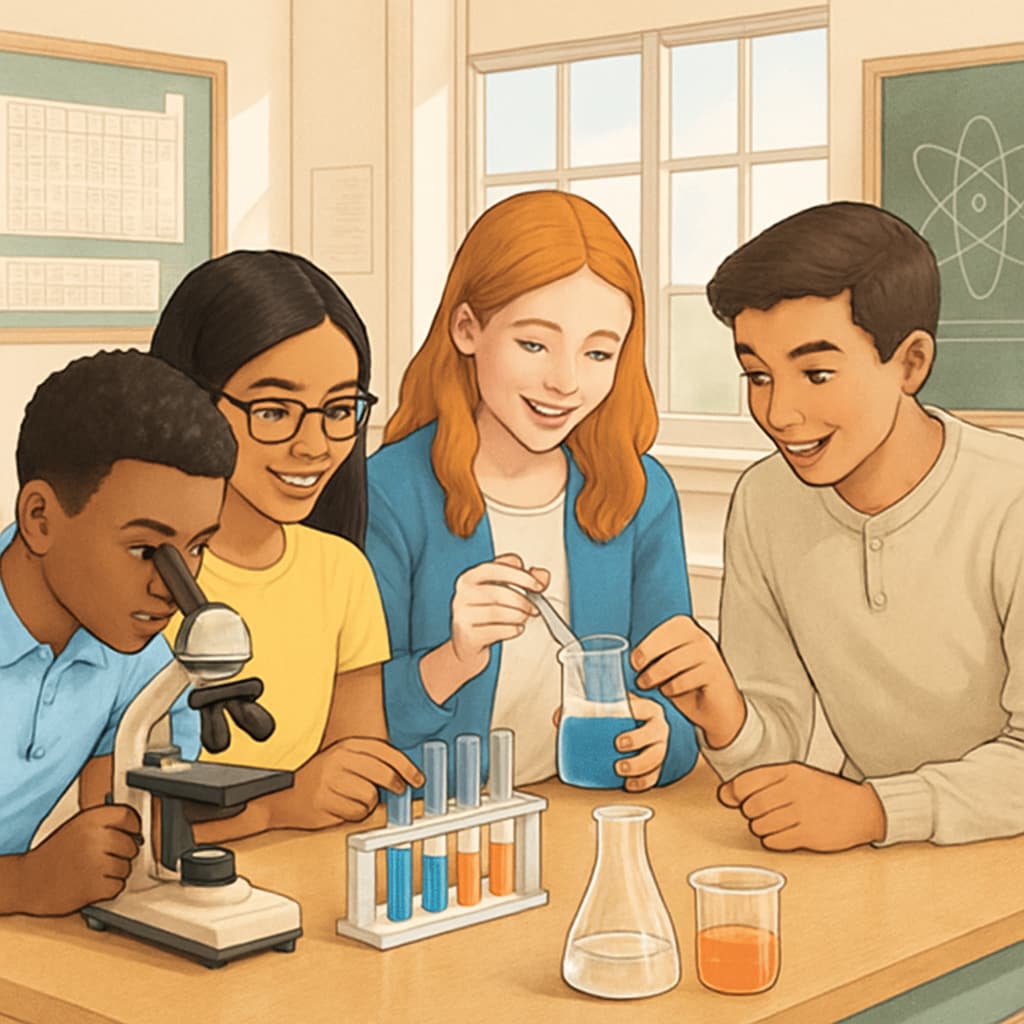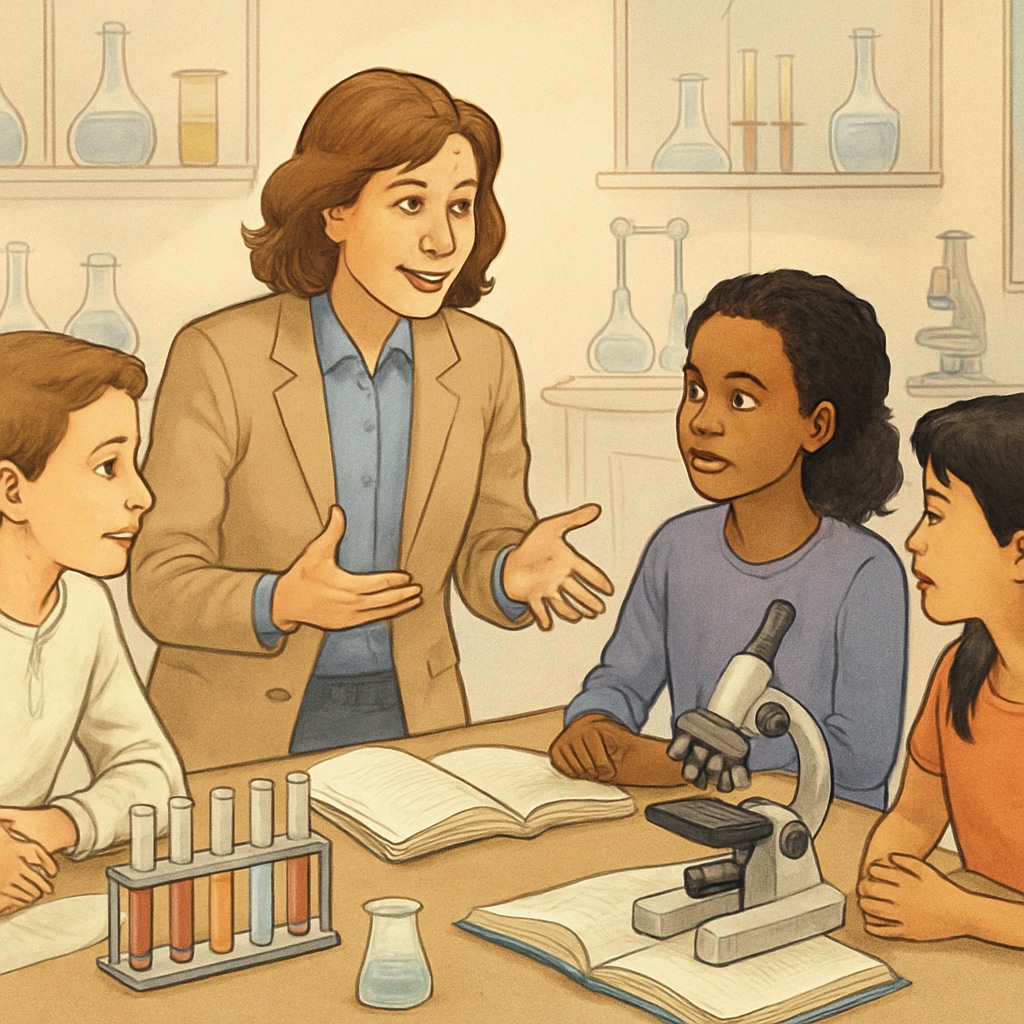In high school science classrooms where a significant number of students are English language learners (ELLs), teachers face the dual challenge of delivering complex scientific concepts while addressing language barriers. By employing effective strategies such as differentiated instruction, educators can create inclusive environments where all students thrive. This article discusses actionable methods to enhance science teaching for ELLs while ensuring high-quality education for diverse learners.

Understanding the Needs of English Language Learners in Science Classrooms
English language learners bring unique strengths and challenges to the science classroom. They may excel in inquiry-based learning and visual representation but struggle with language-heavy content such as scientific vocabulary, dense texts, and technical instructions. Recognizing these challenges is the first step toward creating a supportive learning environment.
To address their needs, teachers should focus on the following core areas:
- Building academic vocabulary specific to science
- Providing multimodal learning opportunities
- Encouraging collaborative group work
By understanding the linguistic and cultural backgrounds of their students, teachers can implement strategies that promote both language development and content mastery.
Key Strategies for Inclusive Science Teaching
Creating an inclusive science classroom involves tailoring instruction to meet the needs of diverse learners. Below are practical strategies that teachers can adopt:
1. Use Visuals and Hands-On Activities
Science is a subject where visuals and experiments can bridge language gaps. Teachers can use diagrams, videos, and live demonstrations to illustrate complex ideas. For example, showing the phases of mitosis with labeled diagrams or animations helps ELLs grasp the concept without relying solely on text.
Incorporating hands-on experiments also provides ELLs with an opportunity to engage with content physically, which reinforces learning through experience.
2. Scaffold Instruction
Scaffolding involves breaking down learning tasks into manageable steps. For instance, when teaching about chemical reactions, provide a graphic organizer that outlines the reactants, products, and the process. Gradually reduce the level of support as students gain confidence and understanding.
3. Incorporate Language Support
Language scaffolds such as word banks, sentence starters, and glossaries are invaluable tools for ELLs. Teachers can also use language frames to guide students in constructing scientific explanations. For example, a frame like “The evidence suggests that ______ because ______” helps students articulate their understanding.
4. Foster Collaborative Learning
Group work encourages peer-to-peer learning, which can be especially beneficial for ELLs. Mixed-language groups allow students to learn from each other while practicing language skills in a natural context. Teachers can assign roles within groups (e.g., note-taker, presenter) to ensure active participation.

Assessing ELLs in Science Classrooms
Assessment is a critical component of inclusive teaching but must be adapted to the needs of ELLs. Traditional tests may not accurately reflect their understanding due to language limitations. Instead, consider these alternative assessment methods:
- Project-based assessments: Students create models, posters, or presentations to demonstrate their knowledge.
- Observational assessments: Monitor students’ participation in experiments and group activities.
- Portfolios: Collect samples of students’ work over time to track progress.
These approaches allow teachers to evaluate both content knowledge and language development effectively.
Building an Inclusive Classroom Culture
Beyond instructional strategies, teachers must foster a classroom culture that values diversity and encourages equal participation. Here are some tips:
- Celebrate cultural diversity by incorporating examples from different parts of the world in science lessons.
- Encourage students to share their perspectives and prior knowledge, which enriches the learning experience for all.
- Provide emotional support by showing patience and understanding as students navigate language and content challenges.
When students feel respected and included, their confidence and academic performance improve.
In Conclusion
Overcoming language barriers in science classrooms with English language learners requires intentionality and creativity. By implementing differentiated instruction, visual aids, collaborative learning, and alternative assessments, teachers can ensure that every student has access to high-quality science education. Most importantly, fostering an inclusive classroom culture helps ELLs thrive both academically and socially.
For further reading on differentiated instruction, visit Differentiated Instruction on Wikipedia. To learn more about supporting ELLs, check out ELLs on Britannica.
Readability guidance: Keep sentences concise, use short paragraphs, and incorporate transition words to enhance the flow. Utilize lists to summarize key points and ensure accessibility for diverse readers.


